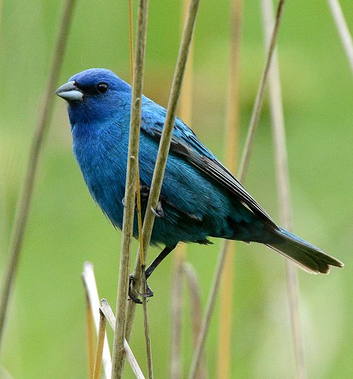Elk Rapids Alamanac
May
|
Have you noticed some lawns looking longer than usual? Spring is a time when pollinators work hard to find food sources. “No Mow May” is a practice that allows lawns to grow longer and lets flowers bloom so your lawn can provide nectar and pollen to help your pollinator neighbors thrive. Mowing less creates habitat and can increase the abundance and diversity of wildlife including bees and other pollinators. _Julie Farrell
|
May 10
|
I recently took a walk in Roselle Park, former pasture land owned by Ada Beef Company. Through a community partnership initiative in 2002, the Land Conservancy of West Michigan worked with Ada Township and the Ada Open Space Taskforce to turn the 240-acre property into a township park and nature preserve, with restored wetlands, an established prairie, and native wildflowers. There was a melodious blend of bird song so I pulled out my iPhone and fired up my Merlin Bird ID app. It was astonishing how many birds I was able to record…21 different species during my short 2-mile walk! The list includes the Indigo Bunting (pictured here), Baltimore Oriole, Yellow-throated Vireo, Wood Thrush, Eastern Kingbird, Yellow Warbler, Rose Breasted Grosbeak and Northern Flicker to name a few of the less common birds I heard. All these birds are there because the habitat has been restored and contains the elements that birds need: Water, trees and shrubs for shelter, and ample native vegetation for food, including insects that the natives provide. Some are on their migration journey to points north and are at Roselle for a stop-over. Whether in a nature preserve or in your back yard, enjoy some birds by downloading the Merlyn Bird ID app and identifying the birds that live here or just passing through. _Elise Lillmars Roe, Ada and Elk Rapids. Ada Parks, Rec and Land Preservation Advisory Board
|
May 14
A recent black bear sighting in Traverse City garnered lots of attention and raised questions about animals in urban environments. It seems most of us were fascinated and rooting for the welfare of the bear, which was relocated by DNR to a place 60 miles away. Something about seeing wild animals grabs our attention and generally makes us feel good. As urban areas expand and animal habitats shrink, humans must learn to live in close proximity with wildlife to keep our eco systems in balance. How shall we do that? For a provocative view of human-wildlife interactions, “re-wilding” and our relationship with nature, see Tenacious Beasts,
Christopher J. Preston, 2023; For a perspective on environmental change, rising carbon emissions, the decline in wildlife, humanity’s impact on nature, and a
message of hope for the future, see A Life on Our Planet: My Witness Statement and a Vision for the Future. Lord David Attenborough, 2020
Christopher J. Preston, 2023; For a perspective on environmental change, rising carbon emissions, the decline in wildlife, humanity’s impact on nature, and a
message of hope for the future, see A Life on Our Planet: My Witness Statement and a Vision for the Future. Lord David Attenborough, 2020
May 20
One of the many ways to recycle includes recycling your clothing. 60% of new clothing ends up in the landfill or incinerator within the same year it was made. The best thing we can do is wear things that already exist! Be a proud outfit repeater, learn to mend and launder your clothes, and swap rather than buy or sell. We need to become aware of what the fast fashion industry is doing to the planet and do our best to stop our over-consumption. _Katie Asher, Slip Vintage Clothing, Traverse City


